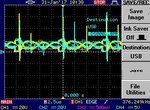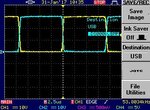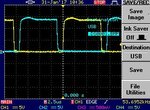Ungie
Newbie level 5
Hi Everyone,
I am working on a push-pull converter design for a small audio power amplifier. It converts incoming 15VDC from an external power supply to +/-30VDC. The supply works very well on the bench and all switching waveforms are clean. One issue that we have had is that sometimes on power up (SD is switched to 15VDC to enable) one or both MOSFETs will fail shorted G-S. What is strange is that this issue is completely un-repeatable and seems to occur at random. Could anyone point me to any areas where I should be looking? I should note that the turn on power requirement at the outputs of the supply are less than 300mA per rail, so I don't believe it is any sort of inrush issue.
Thank you!View attachment PP_SMPS.pdf
I am working on a push-pull converter design for a small audio power amplifier. It converts incoming 15VDC from an external power supply to +/-30VDC. The supply works very well on the bench and all switching waveforms are clean. One issue that we have had is that sometimes on power up (SD is switched to 15VDC to enable) one or both MOSFETs will fail shorted G-S. What is strange is that this issue is completely un-repeatable and seems to occur at random. Could anyone point me to any areas where I should be looking? I should note that the turn on power requirement at the outputs of the supply are less than 300mA per rail, so I don't believe it is any sort of inrush issue.
Thank you!View attachment PP_SMPS.pdf


